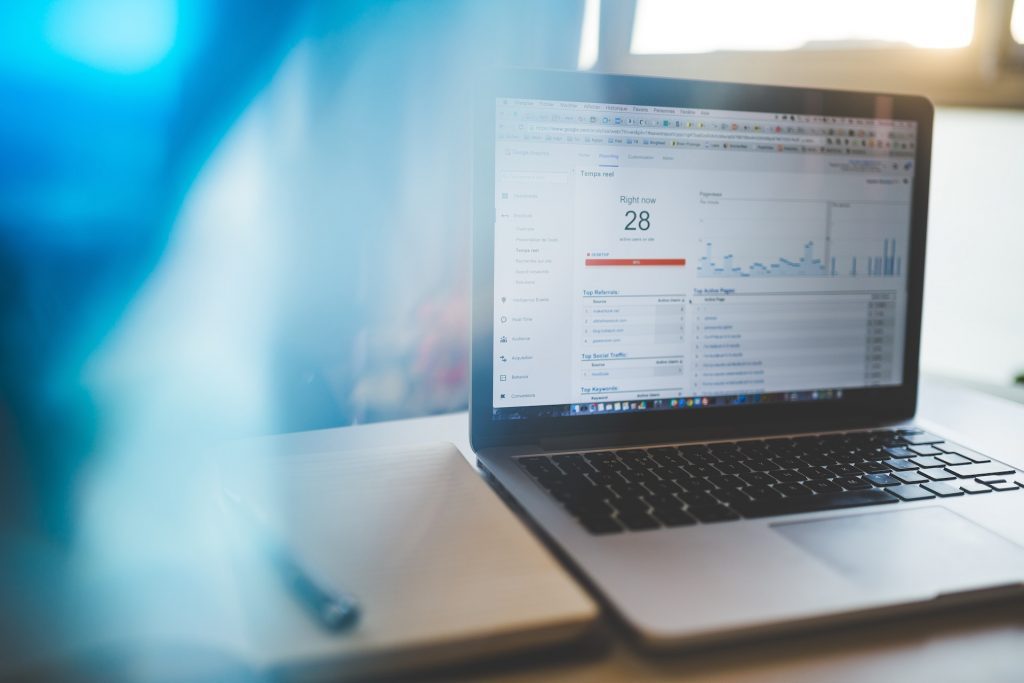Conversion Rate Optimization: Customer Personas And Buying Stages
How do we start with Conversion Optimization? A sure-fire guide to get more out of each website visitor by improving your Conversion Rate through Customer Personas and by understanding the different Buying Stages of customers.
Overview
Part 1: Introduction to Conversion Rate Optimization
Conversion rate optimization (CRO) remains essential in 2023 for getting more value from your website traffic.
CRO is the process of systematically increasing conversions – a desired action like a sale, email signup, download, etc.
With over 1.94 billion websites today, competition for traffic is intense. The average conversion rate is just 2.35% across industries. So huge optimization potential exists.

There are several compelling reasons you need to focus on CRO:
- Increase revenue and growth from your existing traffic – more conversions mean more sales, leads, and customers without more spending on advertising.
- Reduce advertising costs – higher conversions mean you need less traffic to hit revenue goals, allowing reduced adspend.
- Grow email lists and followers quicker by optimizing signup flows. Build audiences faster.
- Improve customer experience – by removing friction and bottlenecks in the conversion process.
Why Conversion Rate Optimization? Stop Losing Money, Get More Out Of Website Visitors
Conversion Rate Optimization is important. Every visitor to your website or app is a potential client. The higher the conversion rate, the more orders and active clients you will have. Conversion Optimization is about lost sales and is meant to help you get more out the money you are investing. It is the most powerful marketing technique, as it will get you more conversions out of the existing visitors, without having to spend more in advertising or SEO.
There is a general dichotomy between what is subjectively perceived as beautiful and a high converting website. There’s a reason why websites like Amazon and Booking look the way they do. The underlying process is conversion optimization based on A/B testing and data.
An Ongoing Process: Start, Analyze, Measure, Repeat
Our approach at improving and optimizing conversions starts at the root. Whether you have an existing website or app, or you are planning a new one, the approach is always the same. We start by defining the desired Target Actions you want users to complete. Is it a purchase? Is it the generation of e-mail leads? Or do you want the media to get interested and call you for an interview? The Target Actions depend on the type of business you have.
Once we have laid out what actions we want to trigger, we create 4-6 Customer Personas. Customer Personas are a description of the demographic, behavioural and personality type attributes of your target customers. Customers’ awareness of your company and products differs across different Buying Stages, which is why it is essential to present tailored information at different stages in the buying process.
After we have understood what each customer persona is looking for in the different Buying Stages, we lay out the content, design and functional requirements and draw the UX mock-ups.
UX Design, SEO and Software Engineering start in parallel with an agile Scrum Sprint planning meeting where user design, functional elements, and content are validated by both designers, developers and the client. This also allows prioritizing elements by their business value and ensures the UX ideas area feasible to develop.
Once the website changes have been implemented we start to track and measure traffic data, including the micro-conversions (target actions) that lead to the macro-conversion (i.e. a purchase). The above steps are then repeated to refine, optimize and improve the conversion rate further.
Part 2: Set Goals and Metrics for Conversion Rate Optimization
The first step in any conversion rate optimization effort is defining your goals and metrics.
Set 1-3 Key Conversion Goals
Be very clear about the specific conversions and goals you want to optimize for. Some examples:
- Email signups
- Free trial registrations
- Product purchases
- Content downloads
- Phone calls
Keep it focused – select just 1-3 core goals that align to key business objectives like revenue, growth, and expansion.
For example, an ecommerce site’s goals could be:
- Increase purchases
- Grow email list
- Boost average order value
Determine Conversion Metrics to Track
Once you’ve set goals, identify the right metrics to track the impact of your optimization efforts. Examples include:
- Conversion rate – Percentage of sessions with a goal completion
- Bounce rate – Percentage of single page sessions
- Pages per session – Average page views per session
- Average order value – Revenue per purchase
Tools like Google Analytics make tracking metrics easy. Focus on benchmarking and improving week-over-week.
Tie Metrics to Goals
Connect your metrics to each goal:
- Goal: More purchases – Track conversion rate, bounce rate
- Goal: Bigger cart size – Measure average order value
- Goal: More emails – Monitor submission volume
Now you have clarity on your optimization goals and can measure progress.
In the next sections I focus on how we can define Customer Personas and on how to change your website or app. We will address each persona at the different Buying Stage he/she is in, with the ultimate goal of improving the conversion rate of your target actions.
Part 3: Create Detailed Buyer Personas for Conversion Optimization
Why Customer Personas?
There are cases for and against creating Customer Personas. I believe in Customer Personas as an effective tool for addressing customer types at an individualized level and to see your website or app from the visitor’s point of view. I am not aiming at covering the range of all potential customers. Customer Personas are very useful in getting to know different personalities and temperaments of your target audience and to develop your website accordingly.
The Goal of Customer Personas is to:
- Understand what makes different market segments tick
- Relate to different Personality Types
- Understand that all users come at different Buying Stages
- Understand competition and their product offering well
Step 1: Create a demographic profile
The first step is to cluster client groups based on demographic factors like:
- Education
- Sex
- Age-range
- Income
- Married/ single
- Children
- Location of residence
If you have an existing business you may analyze client data to determine useful clusters. If you are starting out and don’t have any client data, research competitors’ clients and look at complementary industries to get an idea about relevant customer groups.
Demographic factors provide a useful structure for each customer persona, that will be further refined through a behavioural profile.
Step 2: Define a Behavioural Profile
To understand the behavioural profile of your customers you may survey existing clients by finding answers to questions like:
- How often do they place an order?
- How often do they visit the site?
- When was the last order?
- Are there any patterns in their buying behaviour or frequency?
If you do not have any existing customers you may survey prospective customers to get a starting point.
Step 3: Understand the 4 Temperaments
Aristotle in 325 BC was among the first to divide individuals into four temperaments. In the 1950s David Keirsey defined the 4 temperaments we will use in our persona creation:
- Artisans
- Guardians
- Idealists
- Rationalists
We will briefly go over the 4 temperaments. For more details refer to David Keirsey’s book Please Understand Me: Character and Temperament Types.
The 4 Temperaments
Artisans – The Impulsive Persona – “Sensation Seeking”
- Focused on the here and now
- Spontaneous, optimistic, unconventional
- Browses the web with credit card in hand
- Information needs to be laid out easily
- Quickly changes her mind
- Need to provide them with quick benefits about product/ service.
Artisans represent 30-35% of the population. Address this persona second on your page.

Guardians – The Logical Persona – “Security Seeking”
- Meticulous, trusts logic, methodological, detail oriented
- Focused on problem-solving
- Reads instructions carefully
- Wants to understand every little detail, likes About Us page
- Will scroll down to the end of the page
- Takes a long time to make a purchasing decision
Guardians represent 40-45% of the population. Address this persona last on your page.

Idealists – The Caring Persona – “Identity Seeking”
- Dependable and helpful to others
- Focused on credentials and traditions
- Wants to know how your product helped other customers
- Is influenced by how many people shop at your store
- Wants to know more about your company, founders, staff
- Is slow to make a purchase decision
- Not disciplined in considering different alternatives
Idealists represent 15-20% of the population. Address this persona third on your page.

Rationalists – The Aggressive Persona – “Knowledge Seeking”
- Trust their intuition and want to get ahead of the game
- Competitive, ambitious, motivated
- On quest for self-knowledge and self-improvement
- Hardest to sell to, but great customer
- Want to know how your products help them beat the competition
- Are disciplined in considering different alternatives
Rationalists represent 5-7% of the population. Address this persona first on your page with a strong headline and benefits list.

Step 4: Create Customer Personas
From our work on defining Demographic Factors, a Behavioural Profile, as well as understanding that there are four different temperaments, we can create Customer Personas.
Below we have an example of two customer personas we developed for our client Cosmobutler: a digital concierge in Switzerland that allows booking local home services such as an on-demand laundry home delivery service, through their web-app and website. For Cosmobutler we developed a total of 6 personas to be representative of their customer range. Note how one of the two personas in the following examples is a mix of two temperaments.
Customer Persona 1: Impulsive and caring
Sara Pedrone – 35, female, housewife, Zurich. She used to be a store clerk for 15 years. She is married, 1 child, and has a household income of over 200’000 Chf. Sara doesn’t like to do house chores and wants quick solutions that are good for her family. She is impulsive and caring. She relates well to reviews of products. She likes Websites that allow her to order fast and easily.

Customer Persona 2: Logical
Carl Stimmer – male, 30, single, banker, Zurich. Logical. Carl likes convenient service that saves him time but he also wants the best value for money in town. He carefully reads the benefits of the service, compares the competitors and likes to see numbers and prices. He gets recommendations from his friends, before visiting the site, to further verify reviews and press mentions. Security concerns.

Step 5: Determine how to craft your UX, or what changes to make to your digital product or website
Once we have created our personas, we use a set of questions to find answers to what functional, design and content elements our personas will need on the website or app, to feel individually addressed. The number of required personas depends on the use case. Generally, 4-6 personas provide a good starting point for understanding your customers.
- What scenarios will bring this persona to this page?
- What are the first 3 questions this persona will ask right away?
- Do you answer each of the first 3 questions on the page in an appropriate location based on the temperament of the persona?
Now we show examples of what website changes we determined for our two Customer Personas above.
Example: Customer Persona 1 – Sandra Pedrone – Impulsive And Caring
- She is frustrated and after remembering that her friends talked positively about Cosmobutler, searches for a laundry service on Google Search
- What are the first 3 questions this persona will ask right away?
- Do they deliver in my ZIP code?
- Do they do both laundry & dry cleaning?
- Is it a reputable company – will my clothes not be damaged?
- Do you answer each of the first 3 questions on the page in an appropriate location based on the temperament of the persona?
- Add main served cities on landing page
- Add security message – refund guarantee for damaged clothes
- Add bullet points with main benefits of service: convenient, quality, damage protection
- Does this page use the trigger words appropriate for this persona?
- Add security message – “Damage protection: up to 10x cleaning price refund guarantee for damaged clothes”
- Trigger words: “safe”, “fast”, “reliable”, “trusted”
Example: Customer Persona 2 – Carl Stimer – Logical
- What scenarios will bring this persona to this page?
- He has talked to a friend who is enthusiastic about Cosmobutler. He was curious and visited the Cosmobutler website.
- What are the first 3 questions this persona will ask right away?
- How much does it cost?
- Can I save / redeem a voucher?
- How will it be delivered when I’m not home?
- Do you answer each of the first 3 questions on the page in an appropriate location based on the temperament of the persona?
- How much does it cost? -> Yes -> Prices
- Can I save / redeem a voucher? -> Yes – voucher on 1st page, redeem voucher in order process
- How will it be delivered when I’m not home? -> No -> needs to be mentioned more explicitly
- Does this page use the trigger words appropriate for this persona?
- Great sentence “Free shipping with the Cosmobutler Loyalty Card”
- “premium service at non-premium prices”
- “10’000 orders to date”
Next to the functional and design requirements that result from the above answers, note how this process helps in finding the “trigger words” relevant to each persona. Trigger words are a great resource for your SEO keyword prospecting.
Step 6: Understand that there are different Buying Stages
To relate to your customers at an individualized level, it’s important to understand that customers will visit your website at different Buying Stages before making a decision. I briefly outline the five Buying Stages as described in Conversion Optimization: The Art and Science of Converting Prospects to Customers, by Khalid Saleh and Ayat Shukairy.
- Need recognition (i.e. realizing that your shoes are worn off)
- Information search (i.e. looking for new shoe models)
- Evaluation of alternatives (i.e. comparing shoe models and comparing shoe stores)
- Purchase (i.e. buying the shoes)
- Post-purchase evaluation (i.e. evaluating factors like friendly customer service, shoe quality and other purchase experience factors)
Step 7: Conversion Optimization using Buying Personas and Buying Stages
Once we have done our homework we can put our work and knowledge about personas and Buying Stages to use. It’s important to understand that the earlier a customer is in the conversion tunnel, i.e. Buying Stage, the lower will be his/her conversion rate. This is because in the need recognition stage, we may have a customer who is not even aware of our company or our products and the respective level of trust is still low. In this stage we will have to appeal to her mainly emotionally and less rationally, to first introduce the customer to our products and to provide more details, as the interest increases. As customers go through the conversion tunnel, it is our job through good UX to turn customer states from unaware to aware, from aware to interested, from interested to evaluating and from evaluating to purchase.
Using our previously developed customer personas, we can now break down the answers to their specific questions and concerns by addressing their needs in the single Buying Stages. The below table summarizes our approach at Conversion Optimization by addressing the different Customer Personas through the five Buying Stages.

Part 4: Prioritize and Test Conversion Optimization Opportunities
With your goals defined and deep audience understanding developed, now you can identify and prioritize optimization opportunities.
Conduct Conversion Audit of All Pages
Thoroughly audit every page on your site. Assess how well each page aligns to your personas and conversion goals. Look for:
- Missing or weak calls-to-action
- Mismatched content for the buyer’s journey stage
- Poor page load speeds
- High bounce rates
Catalog every discovered issue and friction point.
Prioritize Quick Wins
Rank all optimization opportunities based on potential conversion impact and level of effort.
Focus initially on quick wins – fixes with a big impact that are easy to implement, such as adding a clear CTA.
Also prioritize pages with the most traffic and highest exit rates.
Create Optimization Hypotheses
Develop an optimization hypothesis for each prioritized opportunity. Hypotheses connect proposed changes to expected lift.
For example: “Adding customer testimonials to product pages will increase conversions by 10%.”
Run A/B or Multivariate Tests
Test proposed changes with A/B or multivariate testing. Try variations of:
- Page layout
- Content
- Headlines
- Images
- Calls-to-action
- Pricing
Let data guide decisions. Scale the experiments that positively impact conversions.
Continual testing and optimization drives ongoing improvement.
Part 5: Continual Optimization
Conversion rate optimization is an ongoing process, not a one-time project. Maintain focus on continual testing and improvement.
Regularly Analyze Data for Insights
Continuously analyze your data to identify new opportunities. Look for:
- Changes in visitor personas and behavior
- Shifts in traffic sources
- New friction points decreasing conversions
- Poor performing pages and content
Set a reminder to review reports weekly or monthly.
Develop Optimization Roadmap
Maintain a roadmap of optimization ideas ranked by potential impact and priority.
Populate the roadmap from ongoing analysis, staff feedback, and customer research.
Building a robust roadmap ensures you don’t run out of conversion optimization tests to try.
Expand Testing Channels
Extend testing beyond the website:
- Email marketing – Subject lines, content
- Paid ads – Ad copy, landing pages
- Sales process – Scripts, presentations
More touchpoints equal more optimization possibilities.
Leverage Technology
Platforms like Google Optimize make conversion testing and personalization easier.
Consider AI-powered capabilities to continually generate and run new tests.
Technology enables scaling optimization programs.
Celebrate and Spread Optimization Culture
Highlight conversion rate optimization wins internally.
Involve staff across teams in brainstorming ideas.
CRO excites employees when results directly grow the business.
Building an optimization culture cements continual improvement.
Conclusion And Take-Away
To be successful in Conversion Rate Optimization look at each Buying Stage from the lens of Personas to satisfy their individual needs on your website and app. Visitors in different Buying Stages will need different sets of information to convert.
Looking for a web development partner to help you improve conversion rate?
